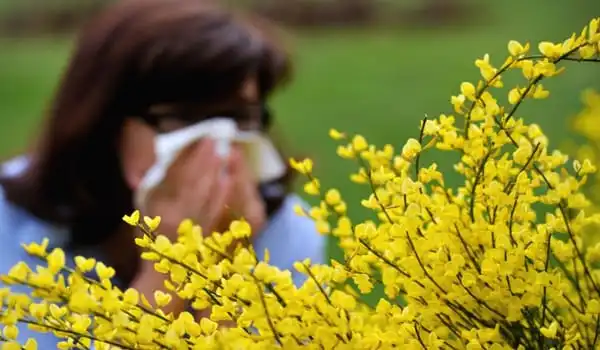The combustion of fossil fuels produces carbon pollution, which warms the globe and contributes to climate change. Plants produce more pollen over longer growing seasons as a result of carbon pollution and warmer temperatures. The combustion of fossil fuels also produces air pollutants and air particles, which can aggravate allergy symptoms.
Climate change is a concern for the environment. It also poses a major hazard to public health. According to a recent study, pollen season grew by 20 days each year between 1990 and 2018, while pollen concentrations in North America increased by 21% during the same time period.
According to recent research from the University of Michigan, allergy seasons are projected to become longer and more intense as a result of rising temperatures induced by man-made climate change. Pollen emissions could begin 40 days sooner in the spring by the end of this century than they did between 1995 and 2014. Allergy sufferers may have to wait an additional 19 days until high pollen concentrations subside.
Furthermore, when temperatures rise and CO2 levels rise, the amount of pollen discharged each year might grow by up to 200 percent.
“Pollen-induced respiratory allergies are worsening as a result of climate change,” said Yingxiao Zhang, a U-M graduate student research assistant in climate and space sciences and engineering and the paper’s first author in Nature Communications. “Our findings can serve as a springboard for additional research into the impact of climate change on pollen and the resulting health impacts.”
Pollen-induced respiratory allergies are worsening as a result of climate change. Our findings can serve as a springboard for additional research into the impact of climate change on pollen and the resulting health impacts.
Yingxiao Zhang
Researchers at the University of Michigan created a predictive model that looks at 15 of the most prevalent pollen species and how they will be affected by expected changes in temperature and precipitation. They coupled climatic data with socioeconomic scenarios, comparing their simulation with data spanning the years 1995 to 2014. They then applied their model to forecast pollen emissions for the next two decades of the twenty-first century.
According to the ACAAI, learning what pollens you’re allergic to and checking daily pollen counts are two of the greatest initial measures to limiting your exposure to seasonal allergens. Windy days with high pollen counts “are definitely not a great time to plan a trek or go to the park,” Nowak-Wegrzyn said, adding that pollen concentrations are highest in the morning.
Keeping windows closed during pollen season, showering after being outside, and wearing sunglasses and a hat to keep pollen out of your hair and eyes are further preventive measures recommended by the ACAAI.
Allergy symptoms range from the somewhat unpleasant, such as watery eyes, sneezing, or rashes, to the more dangerous, such as difficulty breathing or anaphylaxis. According to the Asthma and Allergy Foundation of America, allergies affect 30% of adults and 40% of children in the United States.

Climate change has an impact on the grasses, weeds, and trees that produce pollen. Temperature increases induce them to activate earlier than their historical norms. Higher temperatures can also lead to an increase in pollen production.
The study discovered that pollen seasons have grown by 20 days and contain 21% more pollen since 1990. Climate change caused by human activity was responsible for nearly half of the prolonged pollen seasons and 8% of the trend in pollen concentrations, according to the researchers.
According to Allison Steiner, a University of Michigan professor of climate and space sciences and engineering, the modeling developed by her team could potentially allow for allergy season predictions tailored to specific geographical regions.
“We hope to include our pollen emissions model into a national air quality forecasting system to deliver better and more climate-sensitive forecasts to the public,” she said. Climate change can feel overwhelming, but the good news is that we already have answers to improve your child’s and children’s health around the world. The same steps we take to combat climate change have immediate health benefits.
Many towns and communities aim to decarbonize and become more resilient to climate change—in fact, they’re leading the way on this front—and parents may help shape those efforts. Inquire with local authorities about your community’s climate action plan and how you can make your neighborhood safer and healthier by making it greener, more walkable, and bike-friendly. You can ask policymakers to boost green space by planting trees, improve public transportation access, developing policies for healthy school environments, and investing in electric vehicle infrastructure. These steps will enhance everyone’s health, especially our children’s.
















